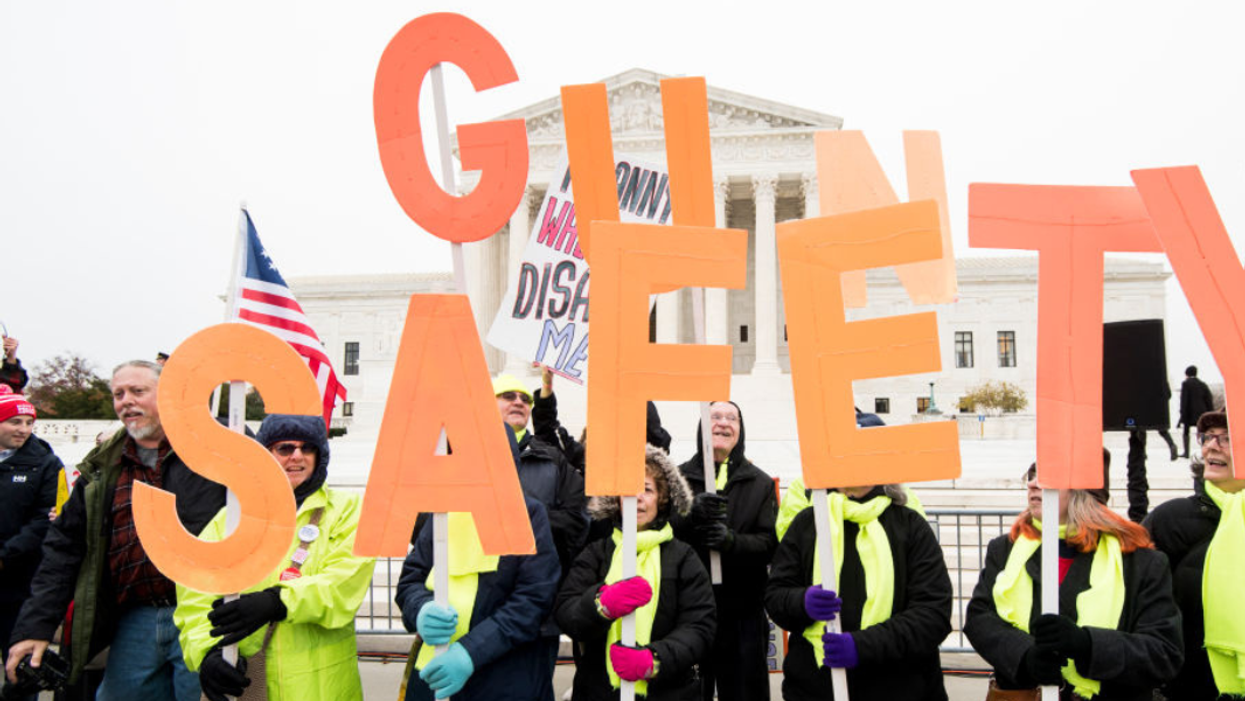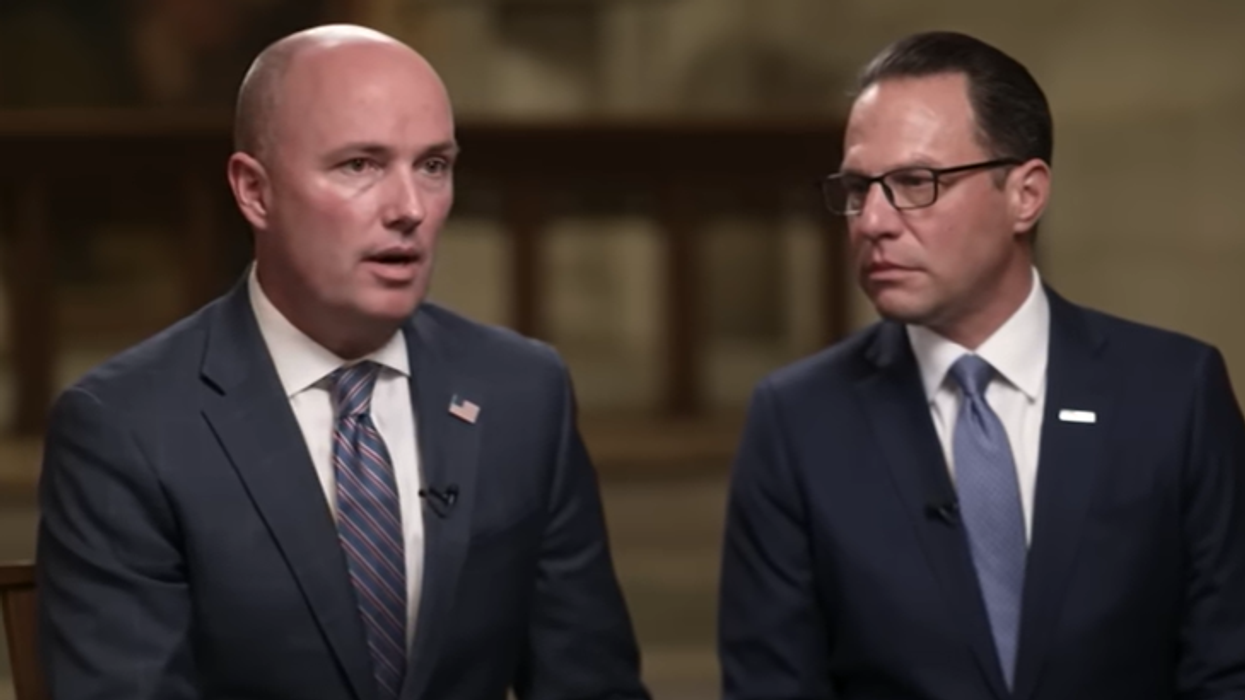Goldstone’s latest book is “Not White Enough: The Long, Shameful Road to Japanese American Internment.” Learn more at www.lawrencegoldstone.com.
That Democrats have long suffered from poor messaging is no secret. Every few weeks, it seems, brings a new lament about the failure of the party to persuade voters, even their own, that their programs and their vision are superior to the false promises peddled by Republicans. As Michael Tomasky wrote, “There’s always a lot of grumbling about Democratic messaging, and for good reason: It’s generally pretty bad—defensive and unimaginative.”
One common criticism is that the Democrats’ message is excessively policy-oriented, too dense and too boring for even most party loyalists to care about. Former Republican strategist Mike Murphy noted, “They’re forgetting a lot of voters don’t follow this detailed stuff because they’re busy with their life. Pick a simple thing people understand that’s popular, that’s smaller.”
That some Democratic strategists demur could be part of the problem. In 2022, Vanity Fair featured an article by Dan Pfeiffer, the former Obama communications director, provocatively titled, “Why Do Democrats Suck at Messaging?” The body of the piece belied the title, however. In it, Pfeiffer’s main contention was that Democrats were no worse than Republicans, who “seem to be winning the messaging war in spite of themselves.” As he pointed out, “Kevin McCarthy looks like he just woke up from a nap and can’t figure out where he is or what he is doing. Mitch McConnell, one of the worst communicators in modern political history, sounds like he is reading The Almanac of American Politics with a mouthful of marbles.” He did grudgingly admit, “The right has effectively created a narrative about Democrats and has stuck to it. ‘Make America Great Again’ is one of the most successful political branding efforts in history.”
Indeed it was and that is the point. Democrats’ messaging fails, because, unlike Republicans, they seem to lack an appreciation for the power of effective use of language.
That may be changing.
Recently, there have been subtle shifts in the basic approach to two key issues and Democrats have since been making progress on both. In abortion, “pro-choice” has been supplanted by “reproductive rights,” and in the Second Amendment debate, “gun control” has been replaced by “gun safety.” Each reflects increased cognizance of how the terms are absorbed by voters who are not ideologically frozen to one side of the debate or the other.
The term “pro-choice” was, as Murphy noted, purely defensive, a reaction to “pro-life,” an abbreviation of “Right to Life,” a phrase that had gestated among anti-abortion groups in the 1960s.
In 1972, Jimmye Kimmey, an Episcopal priest and executive director of the Association for the Study of Abortion, wrote a memo to the association’s members in which she expressed “the need to find a phrase to counter the Right to Life slogan.” Fully aware of the critical need for a potent catchphrase, her suggestions were “Freedom of Conscience” and “Right to Choose.” She preferred the second because, “Right to Life is short, catchy, and is composed of monosyllabic words (an important consideration in English). We need something comparable—Right to Choose would seem to do the job.”
Conscience, she noted “is an internal matter while choice has to do with action—and it is action we are concerned with.” Finally, she brought the issue to its core. “What we are concerned with is, to repeat, the woman’s right to choose—not with her right (or anyone else’s right) to make a judgment about whether that choice is morally licit.”
After Kimmey’s suggestion began to percolate among pro-abortion groups, “Right to Life,” was shortened to “pro-life,” likely by anti-abortion activist Nellie Gray. Gray also favored “preborn” rather than “unborn,” which gave a stronger sense that a fetus was already an actual human being. (Use of the “pre” suffix has since been adopted by ad agencies everywhere, as in “presold” rather than “used” cars.)
Soon after “Right to Life” was abbreviated, pro-abortion groups countered, truncating “Right to Choose” to “pro-choice,” where it remained for decades.
Although the change seemed innocuous and to proponents of legalized abortion, fundamental to a woman’s individual liberty, pro-choice did not seem to sway those whose beliefs were in the center to the degree proponents had hoped.
The problem was that, while pro-choice seems a wholesome enough phrase, when matched against pro-life, it can easily be seen as something else. The natural alternatives would be either “anti-life” or “pro-death.” While many who advocate for abortion rights would dismiss either term as ludicrous and nothing that any reasonable person would believe, in a nation where conspiracy theories are as popular as the Game of Thrones dragons, anti-life might strike a more responsive chord than they assumed.
“Rights,” on the other hand, has become a word with a bell attached to it, the key in any number of disputes—voting, gun possession, stand-your-ground legislation, even legalized cannabis. And it cuts across political ideology. Rights mean the ability to make decisions for oneself, a cornerstone of conservative and libertarian ideology. It is an active term—one must be allowed to assert one’s rights. Those who believe in the right to bear arms will have more difficulty dismissing the right of a woman to make reproductive decisions for herself.
Which is why those advocating for stricter gun laws have a different problem. Use of “rights” has been appropriated by the gun lobby, used in virtually every public statement, advertisement, and article. Any attempt at meaningful legislation, therefore, has been assailed as an attempt to deprive law-abiding citizens of their Constitutional rights, casting those who wish to make it more difficult for disaffected individuals to shoot up a school or workplace as fascist storm troopers.
But gun safety, although not swaying the hardcore, avoids the red flag word “control,” and thus seems a good deal more palatable to gun owners, the majority of whom favor the safe use and storage of weapons. Even Tennessee Governor Bill Lee, as hard-core right wing as they come, was forced to advocate for improved gun safety laws, not because nine-year-olds were gunned down in a Christian school, but because the Tennessee legislature expelled two young black members who were advocating for that very thing.
What caused Democrats to realize that how one says something can be every bit as important as what one says is not clear. But if they wish to convince independent voters that their vision is superior, they will need to continue to express that vision in terms that ordinary people respond to.



















